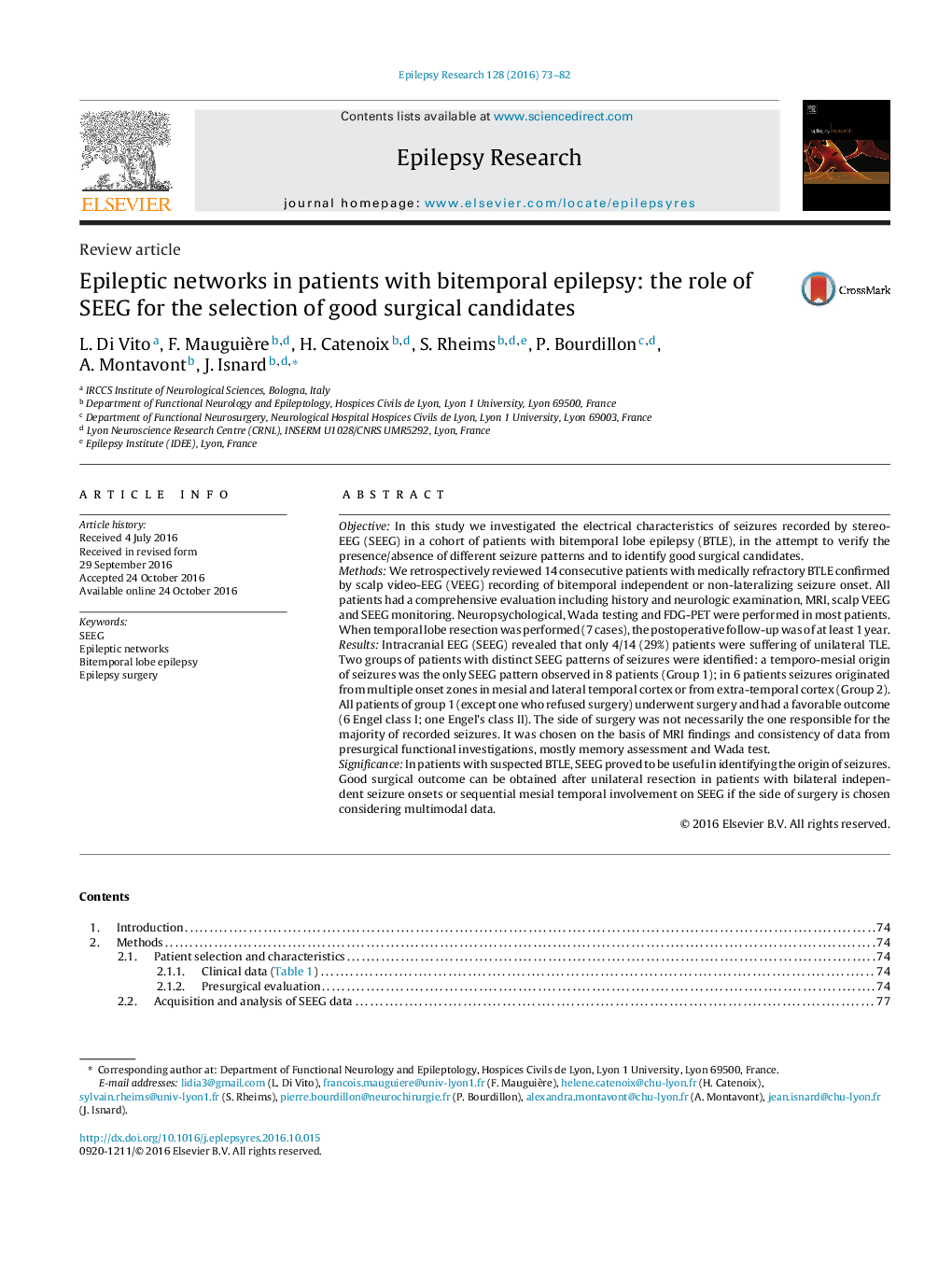| Article ID | Journal | Published Year | Pages | File Type |
|---|---|---|---|---|
| 5628614 | Epilepsy Research | 2016 | 10 Pages |
â¢SEEG characteristics of seizures were investigated in a cohort of 14 patients with bitemporal independent or non-lateralizing seizure onset.â¢Intracranial EEG (SEEG) revealed that only 4/14 (29%) patients were suffering of unilateral TLE.â¢A temporo-mesial origin of seizures was the only SEEG pattern observed in 8/14 patients, of whom seven were operated on, all with a favorable outcome.â¢In BTLE with bilateral temporo-mesial seizures, unilateral surgery can be successfully performed on the side showing the most severe alteration.
ObjectiveIn this study we investigated the electrical characteristics of seizures recorded by stereo-EEG (SEEG) in a cohort of patients with bitemporal lobe epilepsy (BTLE), in the attempt to verify the presence/absence of different seizure patterns and to identify good surgical candidates.MethodsWe retrospectively reviewed 14 consecutive patients with medically refractory BTLE confirmed by scalp video-EEG (VEEG) recording of bitemporal independent or non-lateralizing seizure onset. All patients had a comprehensive evaluation including history and neurologic examination, MRI, scalp VEEG and SEEG monitoring. Neuropsychological, Wada testing and FDG-PET were performed in most patients. When temporal lobe resection was performed (7 cases), the postoperative follow-up was of at least 1Â year.ResultsIntracranial EEG (SEEG) revealed that only 4/14 (29%) patients were suffering of unilateral TLE. Two groups of patients with distinct SEEG patterns of seizures were identified: a temporo-mesial origin of seizures was the only SEEG pattern observed in 8 patients (Group 1); in 6 patients seizures originated from multiple onset zones in mesial and lateral temporal cortex or from extra-temporal cortex (Group 2). All patients of group 1 (except one who refused surgery) underwent surgery and had a favorable outcome (6 Engel class I; one Engel's class II). The side of surgery was not necessarily the one responsible for the majority of recorded seizures. It was chosen on the basis of MRI findings and consistency of data from presurgical functional investigations, mostly memory assessment and Wada test.SignificanceIn patients with suspected BTLE, SEEG proved to be useful in identifying the origin of seizures. Good surgical outcome can be obtained after unilateral resection in patients with bilateral independent seizure onsets or sequential mesial temporal involvement on SEEG if the side of surgery is chosen considering multimodal data.
